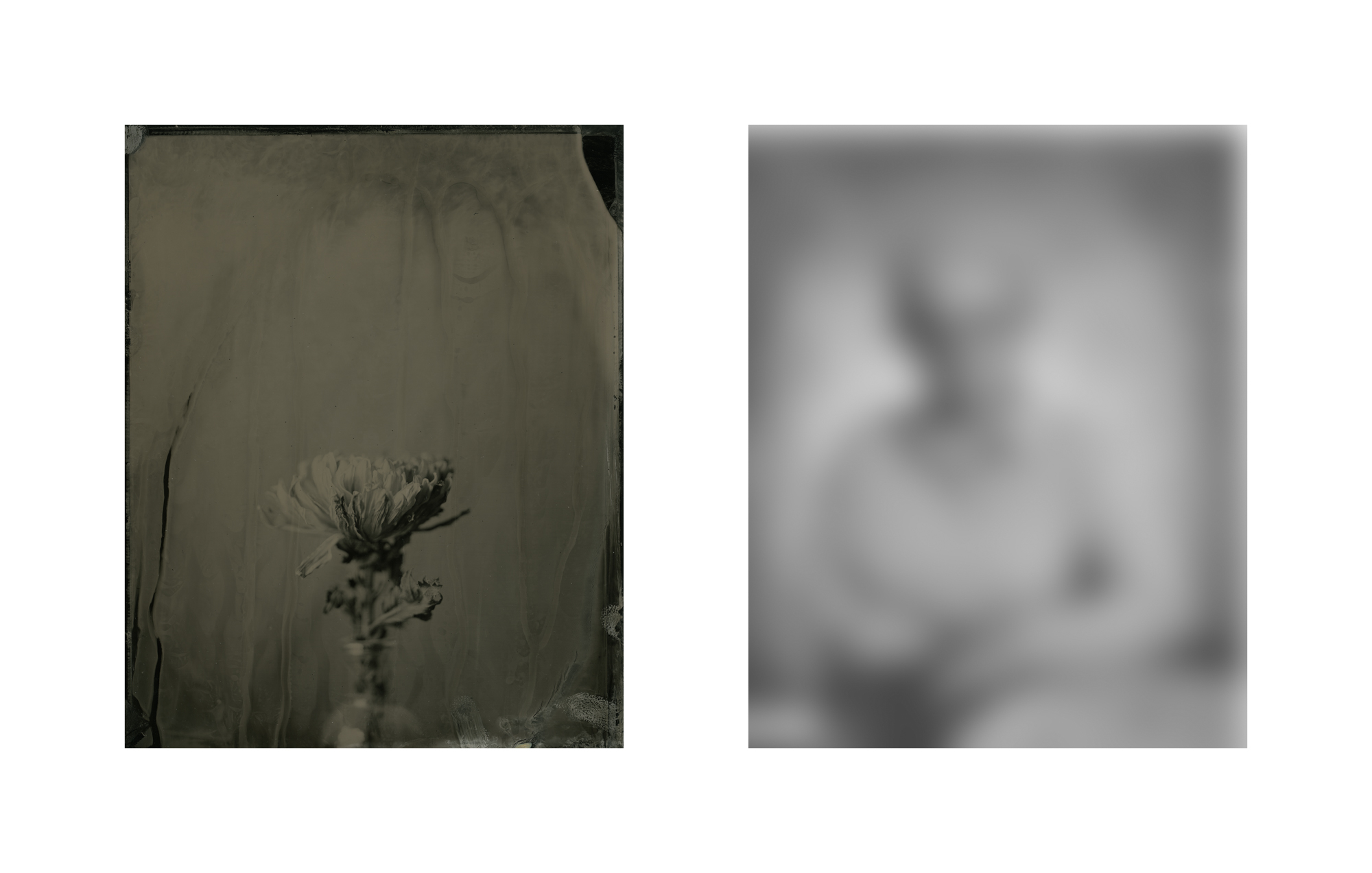Elide Massolari
On the roots of art, not only the pictorial one, there’s an ancient myth; we know about it thanks to Plinio the old who tell the story in its Naturalis Historia (XXXV book): there’s a young woman, known as the girl of Corintho, who draws her love profile on the wall, following the out lines projected by a dim lantern during the night, to avoid the pain caused by the forthcoming departure of the man. A ritual rich of symbolism, the elementary instinct that comes from the need of holding back, of leaving the ephemeral condition and the pure abstraction. This attempt of containing and repeating combines binomially with the idea of possession.
The same kind of concept is at the base of Daniel Duarte’s That which remains, a photograph series which seems to focus on objects; specifically, the series is about objects power of steming, the mysterious way they become keeper of an endless depth.
The series is composed by several photographic diptychs where portraits found in press obituaries come together with floral still lives. The creative process is separated in the duplicity of digital photography and archaic techniques. Duarte uses a pondered, slow shutter speed and collodion plates impressed by ambient light for the pictures of flowers. On the other side, the portraits are rough, low quality digital images; this incongruity is a formal matter but is also on the semantic level.
The collodion method creates an actual artefact, unique thanks to the care applied during its realization; Duarte collects a dilated time and he puts himself in relation with it. A thought space devoted to conjecture, a patient ritual that knows no haste.
Daniel Duarte, Alexandra, diptych, 8×10 alumitype and a digital file, 2014
Daniel Duarte, Howard, diptych, 8×10 alumitype and a digital file, 2014
The concept of death, completely de-realized in the collective imaginary, comes in a new sympathetic light in the photographs of That Which Remains. In this perspective, the digital portraits bring this idea: the handcrafting dimension and the care – which previously were metaphors of the way time molds a man – let blurry physiognomies coming on the photos surface, swallowed up by an amount of pixels where no feature can show a distinction. Duarte sees the memory passing and the contemporary attitude of the materialistic oblivion, through a subtraction process that ends in the residual aspect of portraits, between dissolution and permanence.
Daniel Duarte, Antanina, diptych, 8×10 alumitype and a digital file, 2014
The individuality and the private dimension’s peculiarity smooth over to become irrelevant. That’s why time is so important: inner space that receives and so preserves, organizes, assembles. After this kind of approach, the necessity of presence shows itself through art, specially through photography. The presence as research and fixing of a finiteness.
Cover: Daniel Duarte, Beatrice, diptych, 8×10 alumitype and a digital file, 2014










